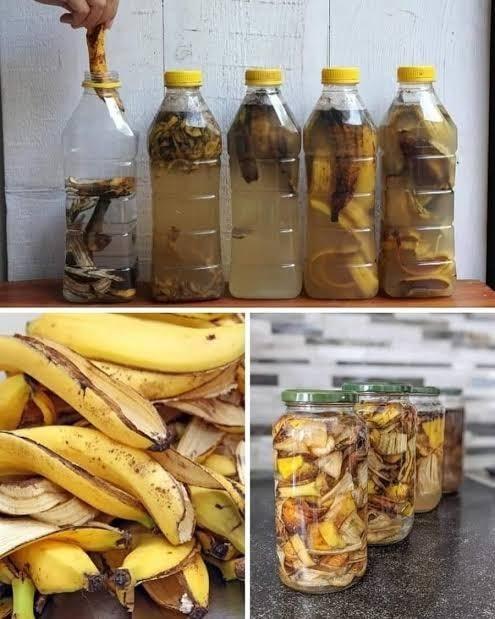ADVERTISEMENT
Absolutely! Here’s a comprehensive, SEO-optimized article titled **”Banana Peels: A Surprising Way to Reduce Waste and Keep Bugs Away”**, designed to captivate your audience and encourage them to keep coming back for more creative DIY projects.
—
# 🍌 Banana Peels: A Surprising Way to Reduce Waste and Keep Bugs Away
Banana peels are often discarded without a second thought, but these humble scraps are packed with nutrients and possess remarkable properties that can benefit both your home and garden. From natural pest repellents to eco-friendly fertilizers, banana peels offer a sustainable solution to everyday challenges.
—
## 🌿 The Nutritional Power of Banana Peels
Banana peels are rich in essential nutrients such as potassium, phosphorus, calcium, and magnesium. These elements are vital for plant growth and can enhance soil fertility when properly utilized.
### Benefits for Plants
– **Potassium**: Essential for flower and fruit development.
– **Phosphorus**: Promotes strong root systems.
– **Calcium**: Strengthens cell walls and reduces blossom end rot.
– **Magnesium**: A core component of chlorophyll, aiding in photosynthesis.
Incorporating banana peels into your gardening routine can lead to healthier, more robust plants.
—
## 🌱 Composting with Banana Peels
One of the most effective ways to utilize banana peels is by composting them. They break down quickly and add valuable nutrients to your compost pile.
### How to Compost Banana Peels
1. **Chop the Peels**: Cut banana peels into small pieces to accelerate decomposition.
2. **Add to Compost Bin**: Place the chopped peels into your compost bin along with other organic materials.
3. **Maintain Balance**: Ensure a proper balance of green (nitrogen-rich) and brown (carbon-rich) materials in your compost.
Banana peels help balance nitrogen in your compost, supporting healthy microbial activity that accelerates decomposition. The added nutrients boost the fertility of your finished compost, making it more beneficial for your garden.
—
## 🐜 Natural Pest Repellent
Banana peels can act as a natural pest deterrent for certain insects and pests in the garden, such as aphids, ants, and even slugs.
### How to Use Banana Peels as Pest Repellent
– **Aphid Deterrent**: Lay pieces of banana peel around the base of plants prone to aphid infestations. The peels will naturally deter aphids and other pests without harming the plants.
– **Slug and Snail Trap**: Place banana peels in strategic areas of your garden to attract slugs and snails. These pests are drawn to the scent of the peel, making it easier to collect and remove them from your garden.
This method is not only cost-effective but also environmentally friendly. It eliminates the need for potentially harmful chemicals, making it a safer option for both you and the environment.
—
## 🧪 DIY Banana Peel Insect Trap
Create your own insect trap using banana peels to attract and capture unwanted pests.
### Materials Needed
– 1 plastic bottle
– 1 banana peel
– 200 ml vinegar (white wine or apple cider)
– 400 ml water
– 200 g sugar
### Instructions
1. **Prepare the Bottle**: Cut the plastic bottle in half.
2. **Mix Ingredients**: In a bowl, combine vinegar, sugar, and water until the sugar dissolves.
3. **Assemble Trap**: Place the banana peel into the bottom half of the bottle, then pour the vinegar mixture over it.
4. **Set Up Trap**: Invert the top half of the bottle and place it over the bottom half, creating a funnel.
5. **Deploy**: Place the trap in areas where you frequently see bugs.
The sweet scent of the mixture attracts insects, while the funnel design traps them inside. This non-toxic solution helps keep your home bug-free without the use of harmful chemicals.
For Complete Cooking STEPS Please Head On Over To Next Page Or Open button (>) and don’t forget to SHARE with your Facebook friends
